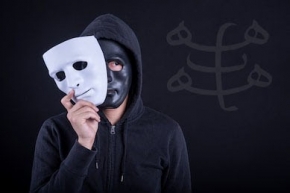On different occasions the Bab had advocated the time-honored practice among his followers (Nabil, pp. 44, 65, 373; Amanat, pp. 200-201). Due to the persecution of his adherents, Baha?-Allah also advocated dissimulation of the faith in a number of his scriptural writings. In a tablet produced after the execution of Badi, his messenger to Naser-al-Din Shah, Baha-Allah ordained taqiya (amr-e taqiya nazel) and advised his followers to restrain from confessing their faith (amr be adam-e eqrar Sader), in order to protect and preserve them. Besides taqiya, the terms setr (concealment), hejab (veil) andh hekmat (wisdom) are also used in this context as synonyms for dissimulation (Fazel Mazandarani, III, pp. 118-19). The order to practice taqiya is also confirmed in a similar tablet in reply to questions raised by the Baha’is of Mazandaran. As in the aforementioned tablet, Baha?-Allah reiterates a Tradition of Imam Ja’far al-Sadeq, who reportedly had said: “taqiya is my religion and the religion of my forefathers,” and urged his followers to conceal their faith: hokm-e setr nazel (Payam-e Baha’i 307, June 2005, pp. 43-44).
Taqiya was practiced by Baha’is during this period as a matter of course. Many traveled in disguise, prayed as Muslims, and were often not aware of the identities of their co-religionists. This practice continued unabatedly during the ministry of Abd-al-Baha (1892-1921). Baha-Allah and Abd-al-Baha, as well as their intimate companions, were generally regarded to be Muslims, even among resident Europeans. To the German Templers, who had come at the same time as Baha-Allah to Palestine expecting the near advent of Christ and who lived as close neighbors of the Baha’is in Haifa, both Abd-al-Baha and his father had “remained Muhammedans” (Lange, p. 12). In only very rare cases were they perceived to be propounders of a new religion. They kept to Muslim traditions and rites, prayed in the mosque, and fasted during Ramadan (Fazel Mazandarani, III, p. 118). Abd-al-Baha himself urged his followers on different occasions to practice hekmat and abide by taqiya: alaykom be’t-taqiyya (Abd-al-Baha, pp. 325-27).
The first notion of a prohibition in regard to dissimulation seems to be contained in a letter of Shoghi Effendi to the National Spiritual Assembly of the Baha’is in Iran, dated 9 November 1927. In it Shoghi Effendi mentions a telegram sent by him recently to the same assembly urging all Baha’is wishing to apply for identity certificates and passports not to practice dissimulation (ketman) any longer, but start to admit their faith openly and courageously, without fear and anxiety. In another letter dated 23 April 1934, Shoghi Effendi expounds that, whereas hekmat and taqiya had guaranteed security for the persecuted Baha’is of the East and had been the only means for the preservation and protection of their religion, dissimulation (taqiya and ketman) should now be regarded as a cause of disdain and debilitation and ought to be practiced no more (Eshraq Kavari, pp. 456 ff.). Today dissimulation is regarded as contradictory to the teachings of the Baha’i Faith, and its practice is strictly prohibited to Baha’is.
Bibliography:
Abd-al-Baha, Makatib III, ed. Faraj-Allah Daki, Egypt, 1921.
Abbas Amanat, Resurrection and Renewal: The Making of the Babi Movement in Iran 1844-1850, London, 1989.
Kamran Ekbal: “Taqiyya und kitman in den Babi und Baha’i Religionen,” Akten des 27. Deutschen Orientalistentages (Bonn - 28. September bis 2. Oktober 1998): Norm und Abweichung, ed. Stefan Wild and Hartmut Schild, Würzburg, 2001, pp. 363-72.
Abd-al-Hamid Ešraq Kavari, ed., Ganjina-ye Hodud va ahkam: estekraj az alwah-e mobaraka dar bara-ye dianat-e Baha’i, New Delhi, 1980.
Fazel Mazandarani, ed., Amr va Kalq III, Hofheim-Langenhain, 1986.
Friedrich Lange, “Aus Palästina,” in Die Warte des Tempels 78/3, February 1922.
Susan Stiles Maneck: “Wisdom and Dissimulation: The Use and Meaning of Hikmat in the Baha’i Writings and History,” in Baha’i Studies Review 6, 1996.
Nabil Zarandi: The Dawn-Breakers: Nabil’s Narrative of the Early Days of the Bahá’í Revelation, tr. Shoghi Effendi, London, 1975.
(Kamran Ekbal)
http://bahaism.blogspot.com/
 English (UK)
English (UK)
 فارسی
فارسی 



